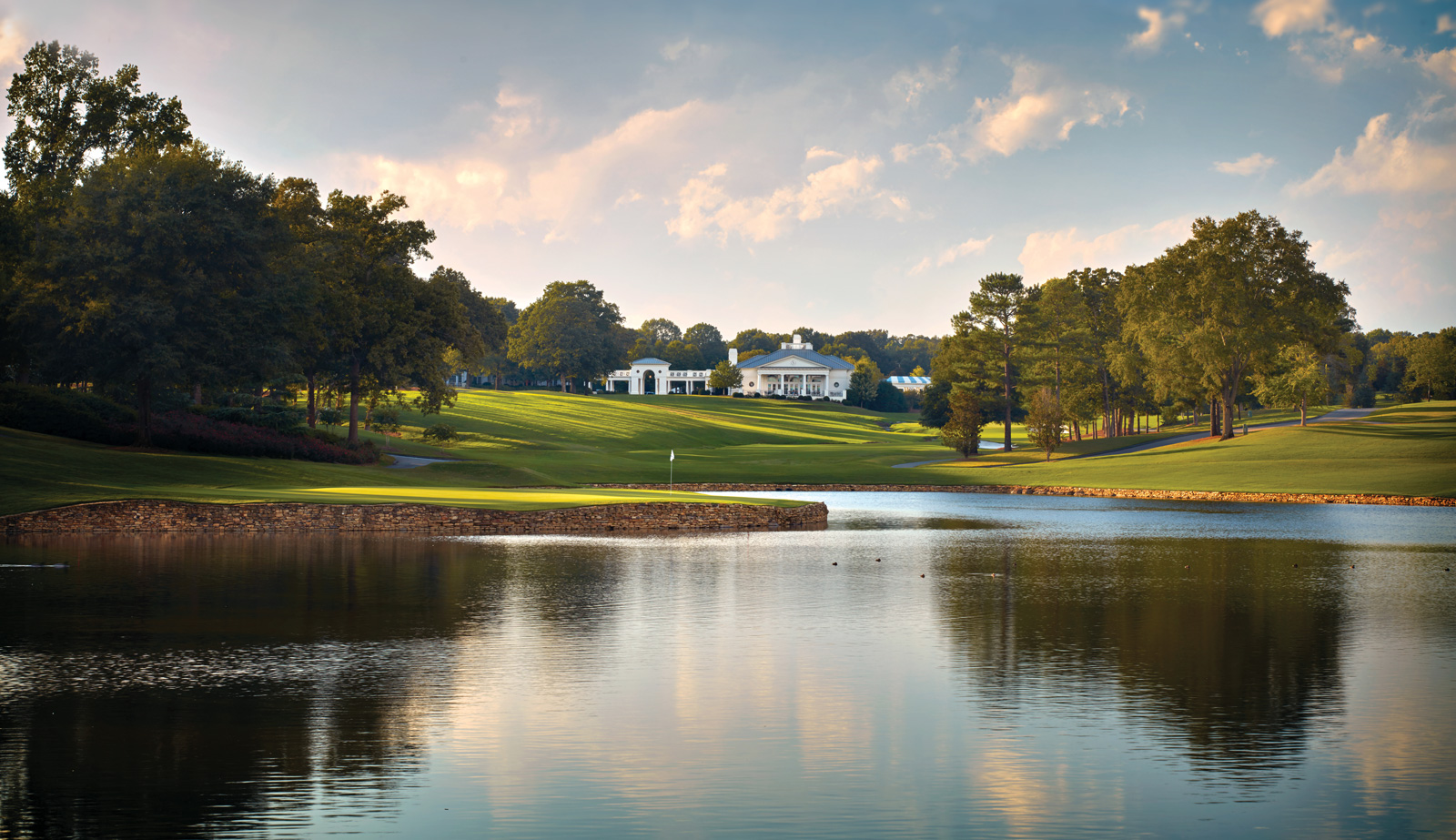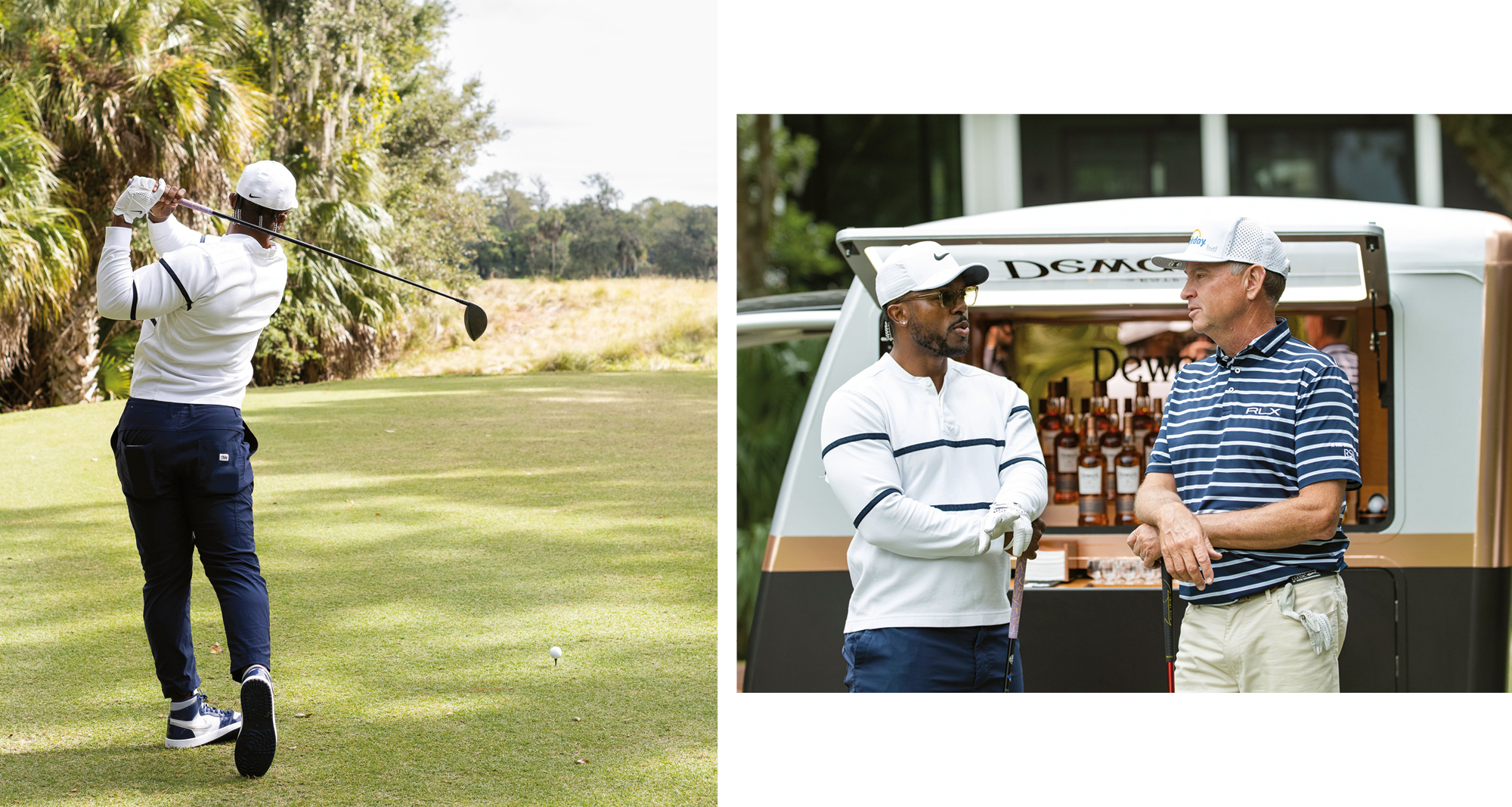
n a sun-splashed August afternoon in 2012, with a bag of outdated golf clubs in tow, Roger Steele walked to an empty hitting bay on the range at The Learning Center at Fresh Meadow Golf Club, located about a 20-minute drive west of downtown Chicago. It had been seven years since he had last taken a swing with any of the clubs that were rattling around in the golf bag slung over his shoulder. But the prospect of playing in a corporate outing—really, the allure of escaping a day spent in his civil engineering office—was all the motivation Steele needed to wipe the dust off of his set of high school clubs and work out the kinks of a golf swing that first took root when he was in kindergarten.
Steele’s father introduced him to the game at a young age, and for more than a decade Roger begrudgingly played along. As a boy (and later a teenager) growing up in Chicago during the 1990s, Steele and his friends idolized Michael Jordan and—like so many kids across the country—they all wanted “to be like Mike.” Basketball was king. Playing golf, even if you were good at it, wasn’t something to brag about. “I would try to hide the fact that I played golf,” he remembers.
Working against him, however, was the fact that Steele was good. He played well in a handful of junior golf events when he was 13 years old, and his accomplishments grabbed the attention of the Chicago Sun-Times. The newspaper ran a story about Steele and his successes on the course, which his seventh-grade teacher read, cut out and pinned to the bulletin board in her classroom. “I literally hated that it was right there,” Steele recalls.
The irony of Steele’s childhood is that Michael Jordan was, and always has been, almost as fanatical about golf as he is about basketball. Had Steele and his friends known this—had social media existed 25 years ago and the personal lives of star athletes been more public knowledge, as they are today (more on this later)—golf may not have seemed like something to hide. Such was not the case during the mid to late ’90s, however, and by the time Steele headed to college, he was happy to leave his clubs behind.
Attending the University of Illinois, Steele joined a black fraternity, played intramural basketball and spent his time mostly in the company of other like-minded students. “My black experience in college was the crux of what I did there,” he says, “but when I graduated, I realized that there was so much happening that I hadn’t been exposed to.”

Fast forward a few years, and as Steele walked onto that driving range in Hillside, Illinois, he began to realize how diverse the game of golf was, too. “[When I was younger], I hadn’t really taken the time to notice all of the different types of people to engage with, and this driving range that I went to… man, it was crazy,” he recalls. “I saw people in bus driver uniforms, doctors in scrubs hitting golf balls, women, kids, senior citizens. I was starting to accept the fact that I was a part of this diverse community.”
In time, Steele would pivot away from the engineering career that he had pursued after graduating college. Before long, he was seeking out jobs within the golf industry, first in Orlando and later in Los Angeles. An opportunity at Urban Golf Performance in L.A. further introduced Steele to the diverse community of golfers that existed—a collective that included notable professional athletes such as Derek Fisher, Reggie Bush and Golden Tate.
“Me being rooted in who I was and then going [back] into the game and realizing that who I was could exist around all of these different people who are not like me, it was the best way for me to do things,” he acknowledges. “It made me appreciate a lot more who I was within the sport versus just loving the sport because it was something that was forced on me when I was younger.” Today, Steele, at 35, has leveraged his ever-strengthening presence on social media into a number of gigs in the world of golf, not the least of which is Range Talk, a talk show of sorts, produced by Callaway Golf, which shares candid conversations between Steele and notable golf-enthused celebrities. The guest list is eclectic: Steele has talked with tour stars Jon Rahm and Xander Schauffele, as well as pro athletes from other sports, including Stephen Curry, Larry Fitzgerald and Justin Herbert.
On the topic of growing the game—and more importantly, diversifying its audience and those who play—Steele is adamant that social media will be instrumental. In fact, he points to a slew of social media personalities who have larger followings, more traction and more influence than some of the top players in the world.

“Historically, if you asked a person who their favorite golfer was, people would have said Tiger Woods,” he says. “But now, what I’m starting to realize is that each of us is our own favorite golfer. When it really comes down to it, I am my favorite golfer. I’m really my number one priority. And I think because of that, we’re all looking for more relatable figures to align with. They give us more parallels that we can actually make decisions around.
“With social media allowing for more relatable figures to have platforms,” he continues, “we’re just going to see these huge growth opportunities coming from regular people who love the game and know how to tell a good story and build rapport with people.”
The diversification of the game, in Steele’s opinion, is also casually linked to the broadening array of golf apparel—clothing that makes the point that the golfing lifestyle can and should permeate a vast cross-section of cultures and communities. “Growing up, when I left the golf course, I needed to completely take off everything that I had on and go put on something completely different to go do anything else that I wanted to do,” Steele says. “I wouldn’t be caught dead wearing golf clothes anywhere else other than a golf course.
“Golf doesn’t stop at a golf course,” he continues. “It shouldn’t stop at a golf course. But the fashion part never spoke to the other facets of people’s lives. To have these brands come in and create these lifestyle pieces that allow them to represent golf in every facet of life, that’s a huge step because they pretty much turn into billboards for golf advocacy.”
Steele believes that significant growth is possible for the game—the influx of newcomers venturing onto the range, the course or to establishments such as Top Golf is proof of that potential. But in the content creator’s opinion, all growth isn’t necessarily good growth. To ensure that the game expands in a way that becomes more inclusive and more accessible to people in underserved communities, Steele believes that it will require a concerted effort from both the people in and around those communities, as well as the movers and shakers within the golf industry.
“They [golf’s influential leaders] have to appreciate the perspective of people that come from places that they don’t,” he says. “Golf has to make people feel like they matter. They have to appreciate the fact that this is going to be a starting place for a lot of different people…. If you want me to respect it, start caring about the experiences that I’m having, being from where I’m from.”
At the community level, Steele says the advantages and benefits of golf need to be better communicated. Kids in underserved neighborhoods need to know that opportunities to better their lives, for upward mobility, exist at many different levels within the golf industry. That those opportunities aren’t limited only to the few who can play golf at the highest level. “There’s a lot of professionals, a lot of service people in the golf space, that can demonstrate how beautiful their lives are, the access that they have, the relationships that they have,” he explains. “They can really show kids that whatever they want to be, golf can support that and amplify that.
“When I get a chance to talk to kids, I tell them that whatever undertaking they choose to pursue, that their life plus golf is a better life,” Steele continues. “I don’t think that enough kids understand that by just adding this game [to their lives], it moves the ceiling up another 20 floors as far as where their lives can go.”
Follow Us On


| Cookie | Duration | Description |
|---|---|---|
| cookielawinfo-checkbox-analytics | 11 months | This cookie is set by GDPR Cookie Consent plugin. The cookie is used to store the user consent for the cookies in the category "Analytics". |
| cookielawinfo-checkbox-functional | 11 months | The cookie is set by GDPR cookie consent to record the user consent for the cookies in the category "Functional". |
| cookielawinfo-checkbox-necessary | 11 months | This cookie is set by GDPR Cookie Consent plugin. The cookies is used to store the user consent for the cookies in the category "Necessary". |
| cookielawinfo-checkbox-others | 11 months | This cookie is set by GDPR Cookie Consent plugin. The cookie is used to store the user consent for the cookies in the category "Other. |
| cookielawinfo-checkbox-performance | 11 months | This cookie is set by GDPR Cookie Consent plugin. The cookie is used to store the user consent for the cookies in the category "Performance". |
| viewed_cookie_policy | 11 months | The cookie is set by the GDPR Cookie Consent plugin and is used to store whether or not user has consented to the use of cookies. It does not store any personal data. |